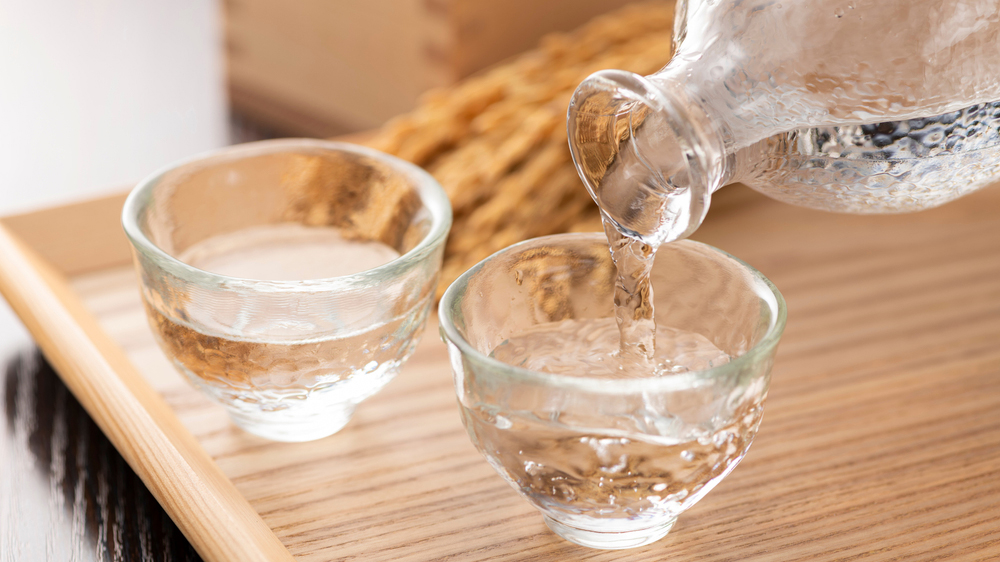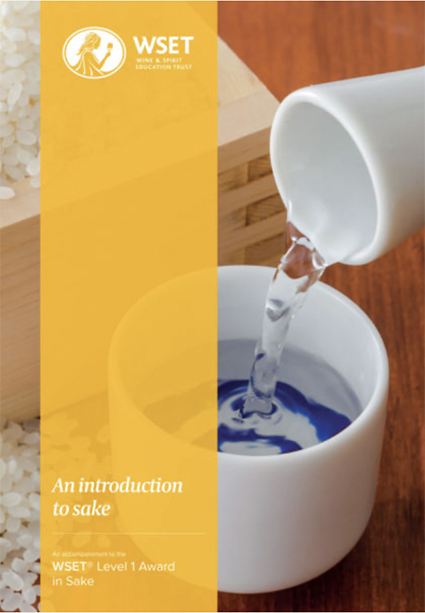Sake, the word conjures up images of immaculate meals, brightly-colored fish, and joyous experiences spent with friends and family. We pair the Japanese rice wine with some of the world’s finest fish, and yet, too often, it’s an afterthought. But, what if, with just one day of effort, you could confidently pair the right Sake with everything from sushi to fried chicken, pappardelle, and caviar? Thanks to Manhattan’s International Wine Center and its impressive trove of instructors, this is now possible.
Sake traces its history back to the 8th Century. From Hokkaido in the north to Okinawa in the south, around 1,500 sake breweries each create their own unique brew. Just four ingredients–rice, koji (rice mold), water and yeast–are used to make the beverage, but the variables are many. Rice type, rice polishing grade, the water’s mineral content, type of yeast, climate, the cuisine of a region, and even the alchemic bent of the brewers can vastly affect the character of the resulting sake.
Clearly, sake is a dense topic and you might be wondering how one could learn enough to speak intelligently about the subject in just one day? The answer comes from the Wine & Spirit Education Trust (WSET), which has put together a Level 1 Sake Course. At IWC that course is led by instructor and WSET Diploma graduate Kathleen Hall Smith who has taught about wine, spirits, and sake on multiple continents
Taking place on February 5, the five hour and 15 minute class will teach you the basic principles of sake production, the categories and grades of sake, factors affecting taste, and more. In the end, you’ll have the ability to select and serve sake with confidence, understand the main types and styles of sake, be able to recognize the four major Japanese terms on a sake label, and be able to properly taste and describe sake. At the end of the class, students will be given a 45-minute exam of 30 multiple-choice questions and those who pass will be awarded the WSET Level 1 Award in Sake.
“Our courses focus not just on gaining knowledge of the product and building understanding, but also providing exposure to real world examples through tasting and food pairings,” explained Mary Ewing-Mulligan, MW, President of International Wine Center. “At Level 1, for example, you discover what are the many types of sake and discover which you prefer. From there, it’s a small step to choosing a sake (or wine) that your friends or associates will like.”
We sat down with Kathleen Hall Smith to learn a bit more about the Japanese rice wine and the Level 1 Sake Course she teaches.

Spirited Zine: When did you fall in love with sake?
Kathleen Hall Smith: Like many people, my first experience was with inexpensive hot sake at a local sushi bar…meh. Then a few years ago, I was traveling from Singapore to NY and had a layover in Tokyo. It was the first time I had ever had sake served at a cool temperature, and the first time I had ever had the Ginjō style, which was lovely: pure with subtle floral and fruity aromas and flavors. Magic! I was hooked. My husband and I moved to Hong Kong a few years later and I signed up for a sake course there to learn all I could about sake. And the rest is history.
SZ: What’s the biggest misconception you come across when it comes to sake?
KHS: There are two big ones. The first is temperature – as I said, many people only know about hot sake, but the Japanese have a wide range of suggested temperatures for sake, most with beautiful descriptions, like hanahie (“chilled spring flower,” or the temperature during cherry blossom season). The second misconception is that sake only goes well with Japanese food, which is completely false!
SZ: Do you collect sake?
KHS: While there are some aged sake styles (called koshu), the vast majority of sake is meant to be enjoyed within a few years of bottling. Freshness is imperative (most sake labels have the bottling date stamped on them). One of my favorite styles is namazake: released in spring, unpasteurized, must be refrigerated, and best consumed within a few months – it’s super-fresh and lively, sometimes with a little prickle on your tongue. Yum.
SZ: Any favorite sake pairings?
KHS: The aforementioned Namazake paired with fried chicken. A warmed Honjozo grade sake made using the ancient Kimoto method (more savoury/umami/earthy with bright acidity) paired with Pappardelle pasta in a creamy mushroom sauce. The most delicate sake, Junmai Daiginjo paired with caviar….I could go on. Sake is very food-friendly and versatile. Now I’m hungry. And thirsty!
SZ: At first glance, the world of Sake can be intimidating. What would you say to someone who is interested in learning about Sake, but is worried about not having the time to truly understand such a complex beverage category?
KHS: Consider taking a course that focuses on the basics like the Level 1 Sake at IWC, this will help create a foundation that you can build on. Outside of a class, start with small bites. Visit your favorite Japanese restaurant, and when you’re looking at the sake list, ask questions and try a few different styles by the glass. I carry around a small Moleskin and write down everything I try and reference it often. Take photos of sake labels, front and back. Sign up for a sake newsletter or podcast, and get familiar with producer names and brewery locations (which can tell you a lot about what style to expect in the bottle). And read everything you can get your hands on. People can’t ice skate the first time they put on a pair of skates. Like anything you want to be good at, it takes time. And practice, which is the fun part.
SZ: What can students expect to learn in the L1 sake class with you?
KHS: WSET Level 1 sake is for the person who has always wanted to know more about sake: the different styles, how it is made, what types of food it pairs best with and why. Students will even learn to read several Japanese kanji characters on a sake label. It is my goal to have students be able to identify what type of sake they prefer and then to confidently order it the next time they go out.
SZ: There is an entire world of knowledge that comes with learning more about Sake. What is the most rewarding part of being well-versed in Sake?
KHS: The most rewarding part for me was my deeper appreciation of the Japanese ethos. The more knowledge you gain about sake, the more you will see the parallels between sake and Japanese customs, culture and religion. The best sake is complex in its simplicity, bold yet elegant, and always balanced and harmonious. For example, in wine, a long finish where flavors linger on your palate would typically indicate high quality. In sake, one of the most revered styles has a very short finish (called kire). I try to describe it like a blast from a symphony, and then…silence. Like a katana sword stroke. Pure. It is difficult to explain, but amazing when you experience it.
The class takes place on February 5th, but you better hurry as places are filling up fast and the deadline to signup is January 31.





